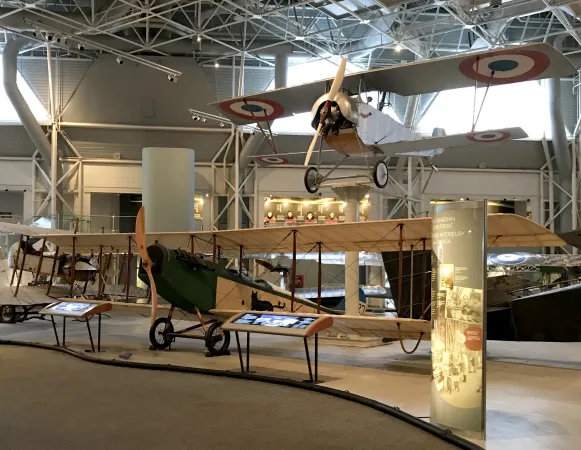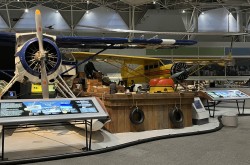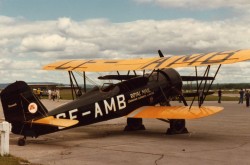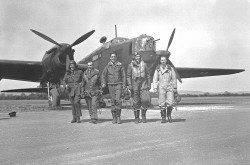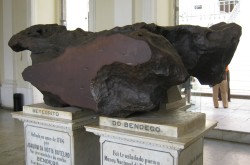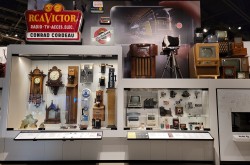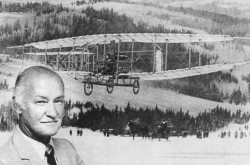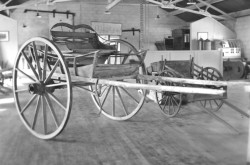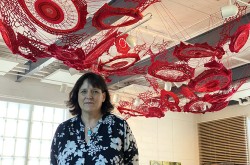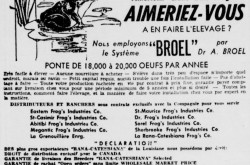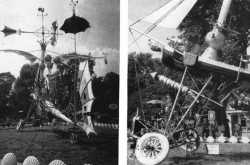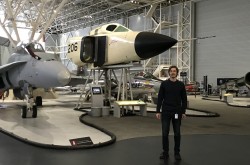Behind the scenes: Updates to the First World War exhibition area
How does museum staff decide which exhibition to update next? Which basic changes can make an exhibition more inviting and insightful for today’s visitors? Take a behind-the-scenes look at how the Canada Aviation and Space Museum team planned its recent updates to the First World War area.
Canada Day is the Canada Aviation and Space Museum’s biggest event — we typically receive our largest attendance of the year. The museum was pleased to welcome over 8,700 visitors this sunny July 1. Amid the bustle of visiting families — legions of pint-sized pilots wearing crafty handmade hats — you will often find several new exhibitions or displays to explore. This year, visitors may have noticed some interesting changes in the First World War area. This redevelopment project is the latest in a series of so-called “quiet updates” (so-called because I made up the term for this article).
As an interpretive planner for the museum, I consider quiet updates to be those smaller-scale projects that museums fund through maintenance budgets. These projects are not promoted to the public, and they don’t have official openings; they just seem to quietly appear “on the floor” as we say. Updates don’t generate the same excitement as “new builds” or blockbusters — everyone loves a shiny project — but they’re essential as we strive to keep our long-term exhibition areas current and engaging. In recent years, we have quietly updated the Early Aviation area (2015) and the Silver Dart display spotlighting the first airplane flown in Canada (2017). We also quietly created a Canada in Space exhibition area (2018).
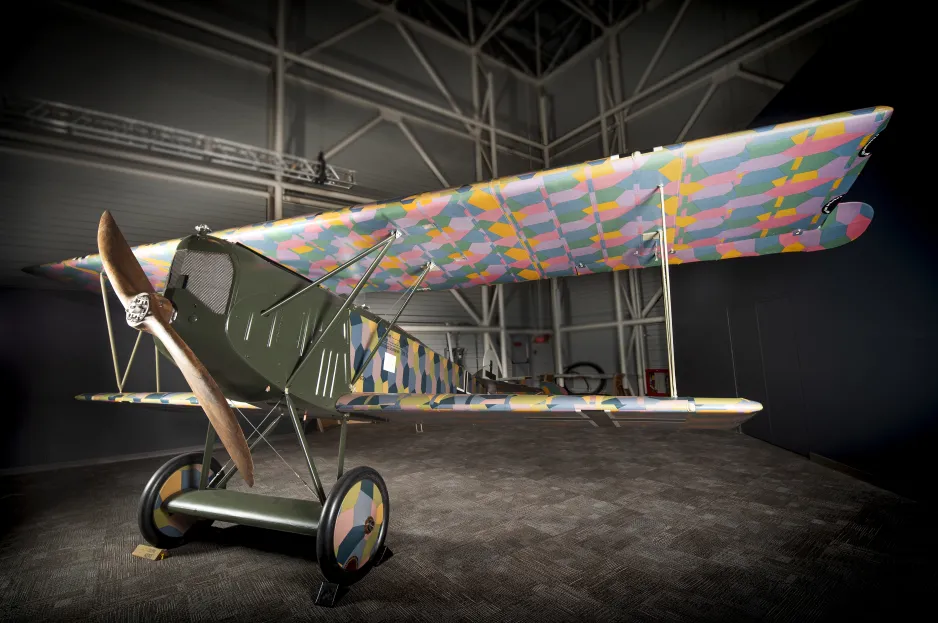
The Fokker D.VII, recently photographed in the museum. Check out that amazing camouflage pattern, designed to confuse the enemy rather than to hide the aircraft.
Return of the Fokker D.VII
Ask any member of the exhibition development team — project managers, curators, or interpretive planners like myself — and they can tell you several areas of the museum that they would love to update. If only the sky were the limit! In reality the budget is the limit, so update projects are typically set in motion for strategic reasons; often an event or opportunity bumps a given concern to the top of the wish list. In our case, the museum’s Fokker D.VII had recently returned to Canada. This First World War German fighter plane is well known to airplane enthusiasts around the globe. The museum’s aircraft was restored in New Zealand by The Vintage Aviator, a company owned by Sir Peter Jackson (of Lord of the Rings fame). We were eager to put the aircraft on the floor and to give visitors the chance to “Meet the Fokker” so to speak.
All of the museum’s quiet updates share a common goal: to maximize clarity. When the current building opened in 1988, the museum was noted for its innovative graphic approaches. Still, this was a time when aviation museums typically saw interpretation as a simple formula: park the plane, and place the plaque. The information on the plaque often prioritized the interests of experts and knowledgeable hobbyists. Technical details were front of mind, with the presumption that visitors already knew the general history. Museology has changed a lot in 31 years, as have museum audiences. As exhibition text panels reach the end of their lifecycles, ongoing changes like reducing word counts, increasing print sizes, eliminating unnecessary jargon, and using more images will help to keep our evolving audiences engaged for the next three decades.
Themes show the big picture
In redeveloping the First World War area, the curators and I focussed on what makes each of the aircraft on display truly significant. We then examined how these points interrelate to tell the larger story of aviation during the First World War. This gave rise to four major themes:
- Weapons with Wings: how aircraft emerged as a military tool, and evolved for specific uses such as observation, bombing and dogfighting
- The Modern Airplane Takes Shape: from the delicate wood and cloth airplanes of the early 1910s, to the strong metal structures we visualize today
- The Aircrew’s Experience: the hardships of flying early open cockpit airplanes, and the reasons for low survival rates among new crew members
- The Canadian Home Front: Canada’s role in military aviation training and aircraft production
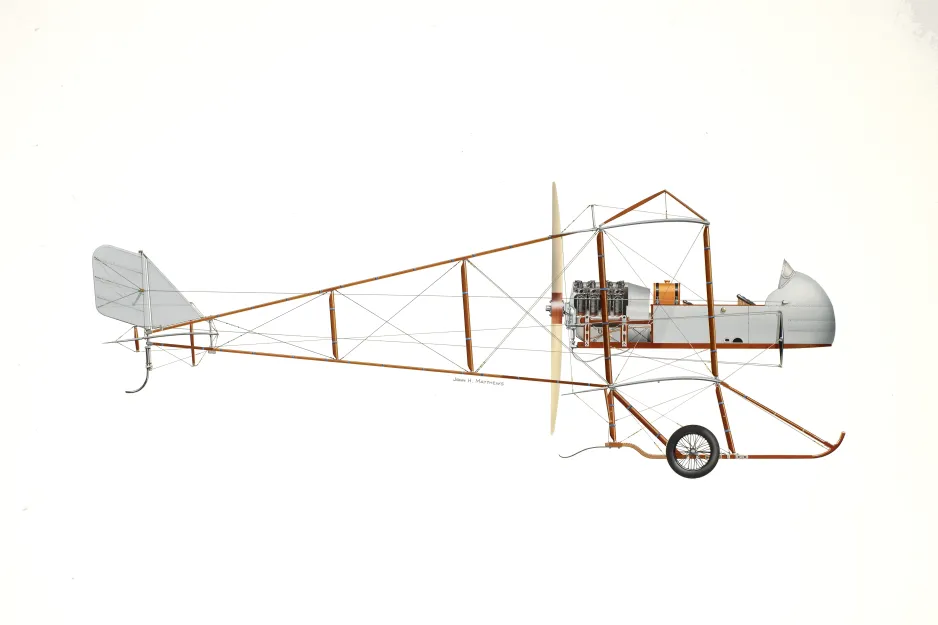
Watercolour painting of the museum’s Farman Shorthorn S.11, an early-war aircraft. It’s amazing the degree to which aircraft structures and materials evolved over the course of the First World War.
These themes served as our lens as we wrote new text and interpreted new images for our main aircraft-focussed text panels. All of the featured aircraft represent at least one of these themes. The Junkers J.1, for instance, is the world’s first all-metal aircraft (ours is the only one still in existence). We also showcase the JN-4 Canuck, a training aircraft produced in Toronto, and the Sopwith Snipe, the type of airplane that Canadian ace William Barker was flying when he earned his Victoria Cross (fighting off four waves of Fokkers). The Maurice Farman S.11 Shorthorn is another interesting example; with one foot in the past, this large airplane resembles some of the first successful flying machines. The key themes are also presented on new freestanding panels, featuring historic photographs and reproduced works from noted aviation artists.
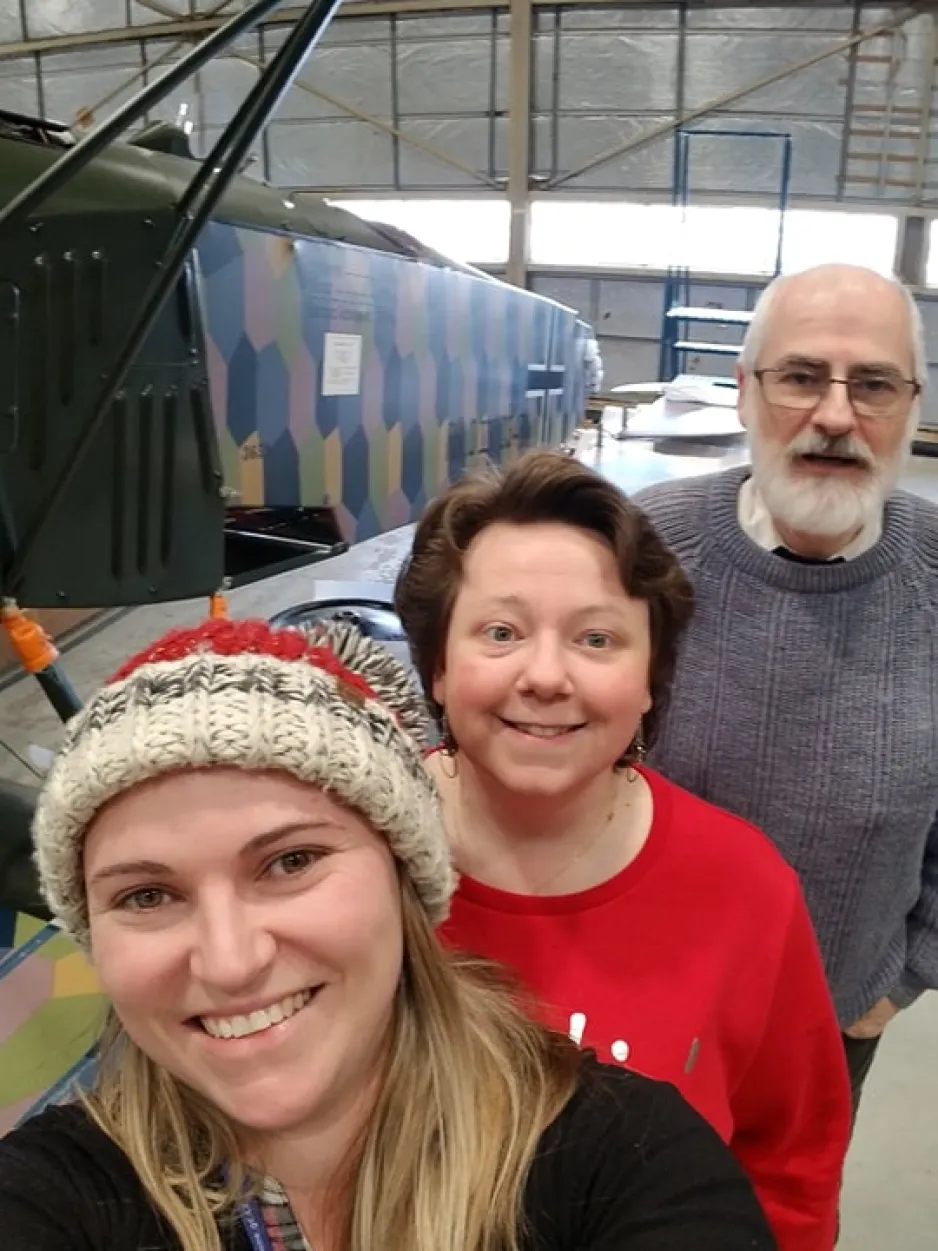
Visiting the newly-returned Fokker D.VII in the conservation bay with our curators Erin Gregory (left, with an awesome toque) and Rénald Fortier (right, who is baffled by the popularity of “selfies”). It was holiday sweater day.
One of our goals in carrying out quiet updates is for our new material to blend in to its surroundings. When we improve a panel here or there, or even a full exhibition area like First World War, we strive to ensure that everything looks at home together. We want you to notice the interesting images and surprising stories — not just the newness. After reading this article, though, I secretly hope you will be able to spot some of these quiet updates the next time you visit.



